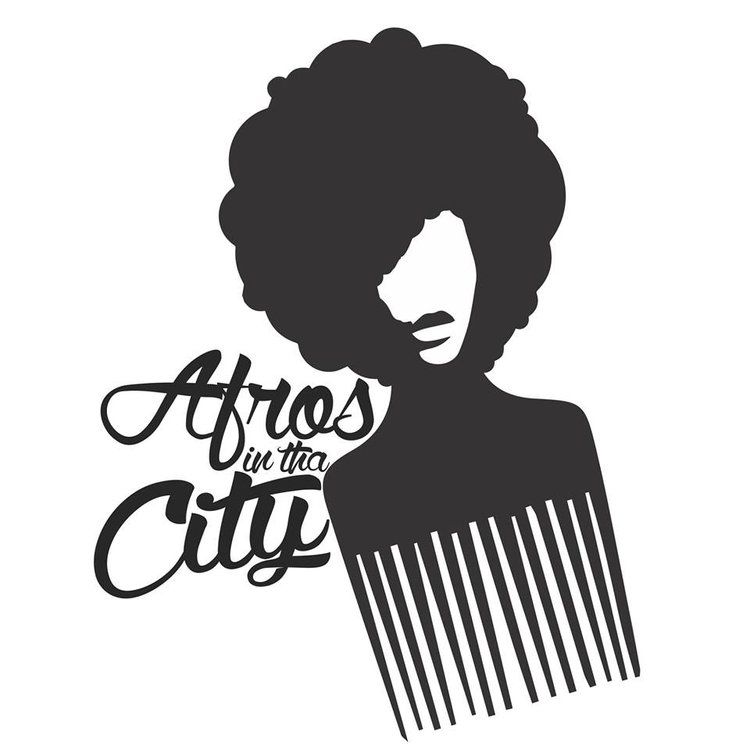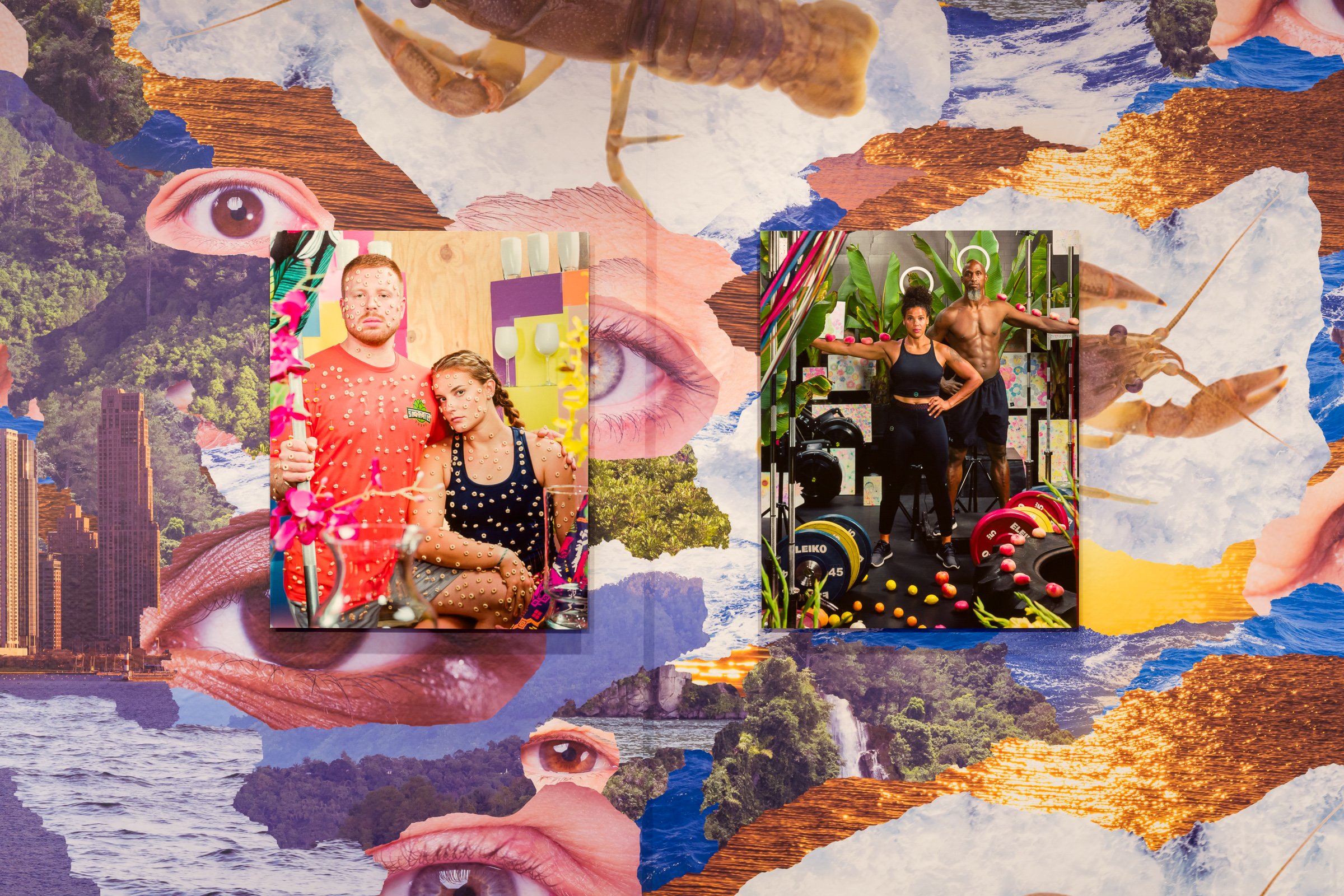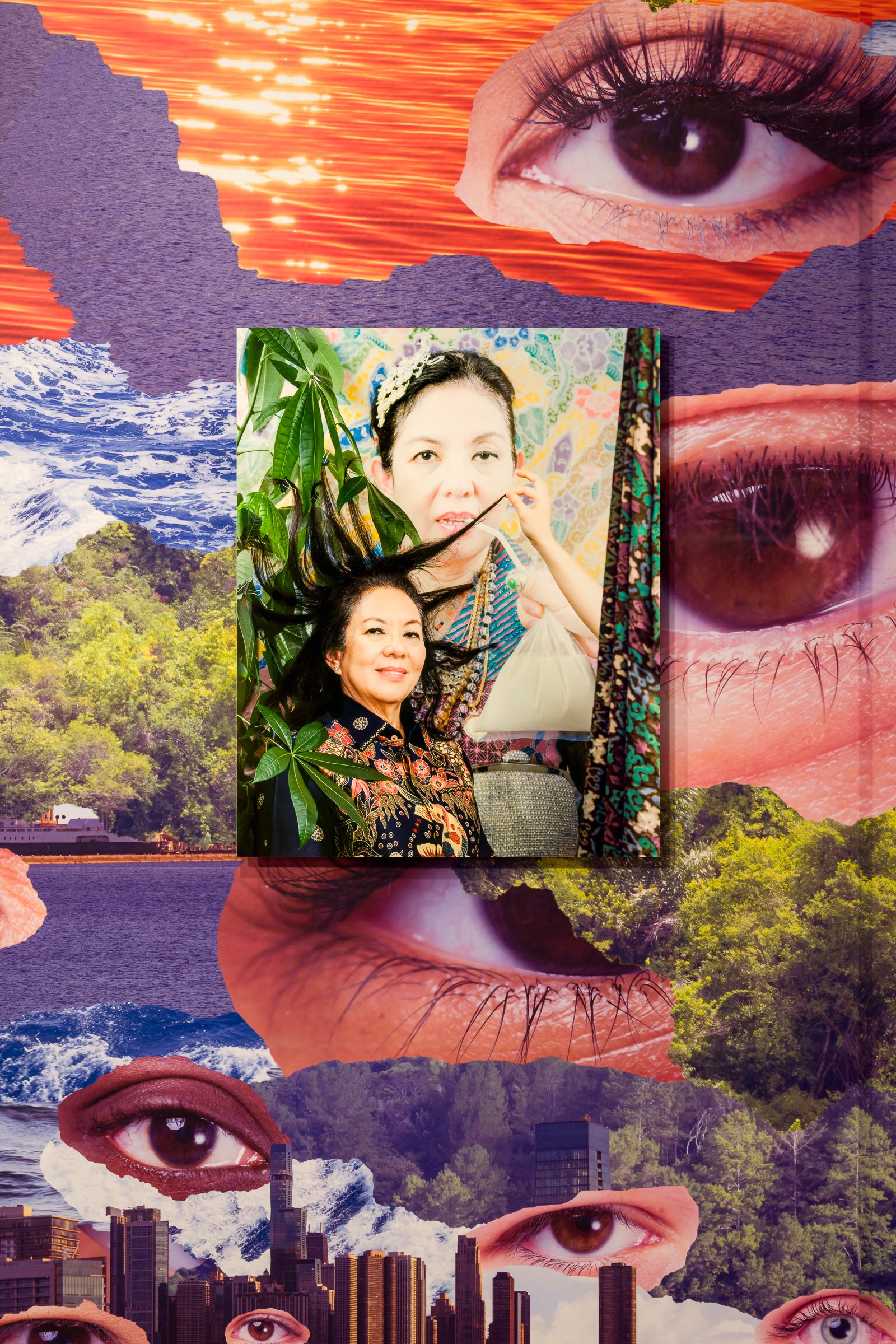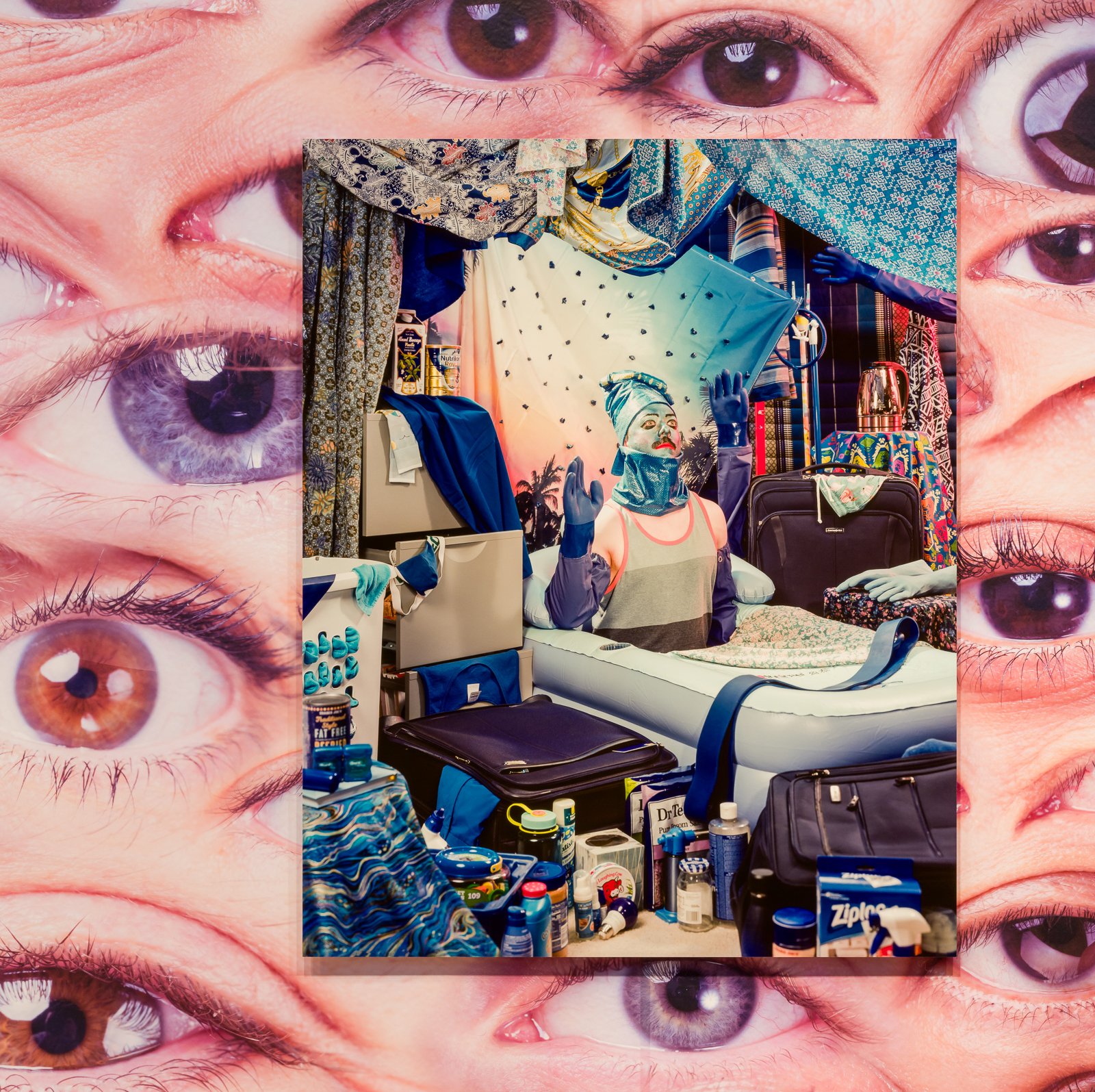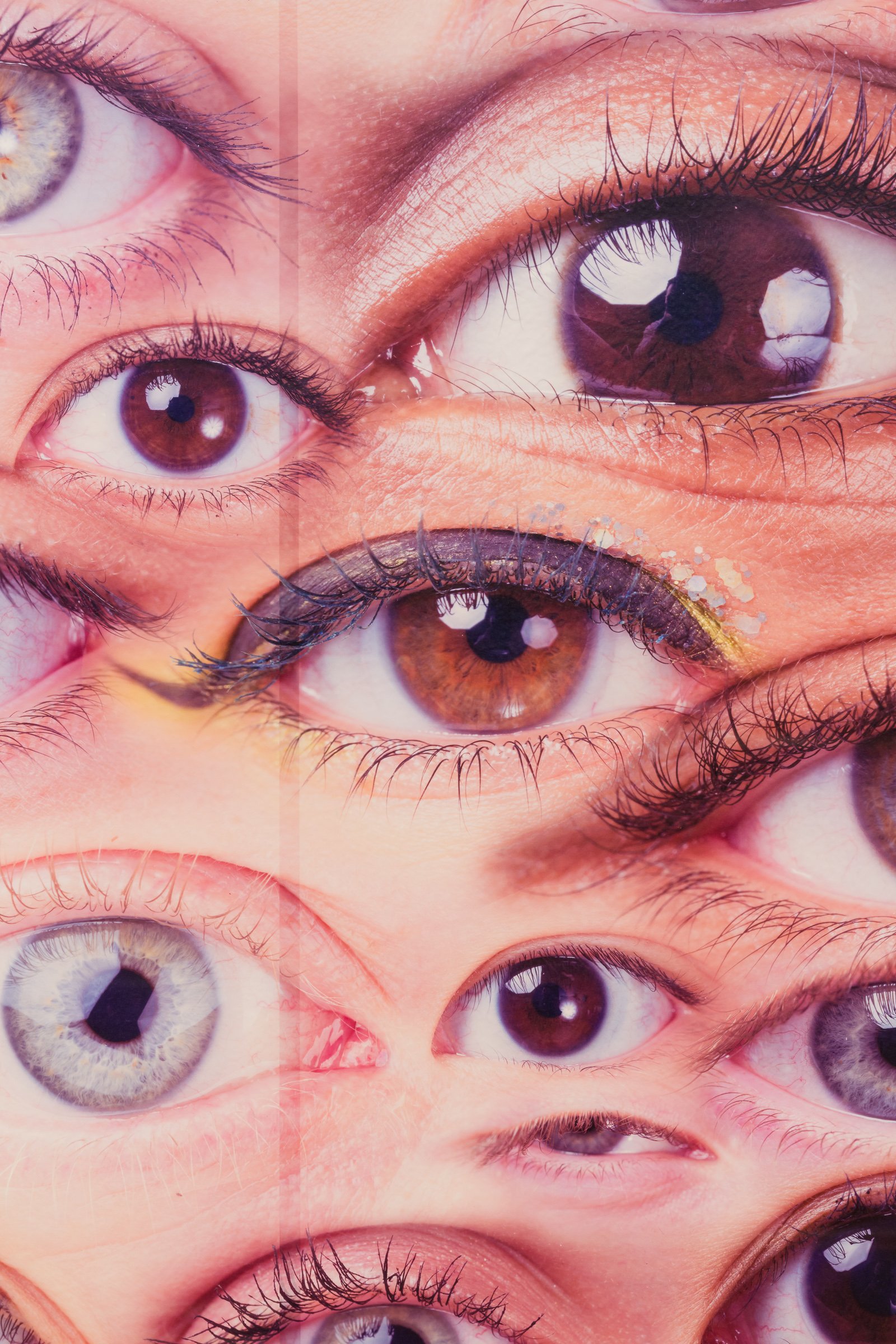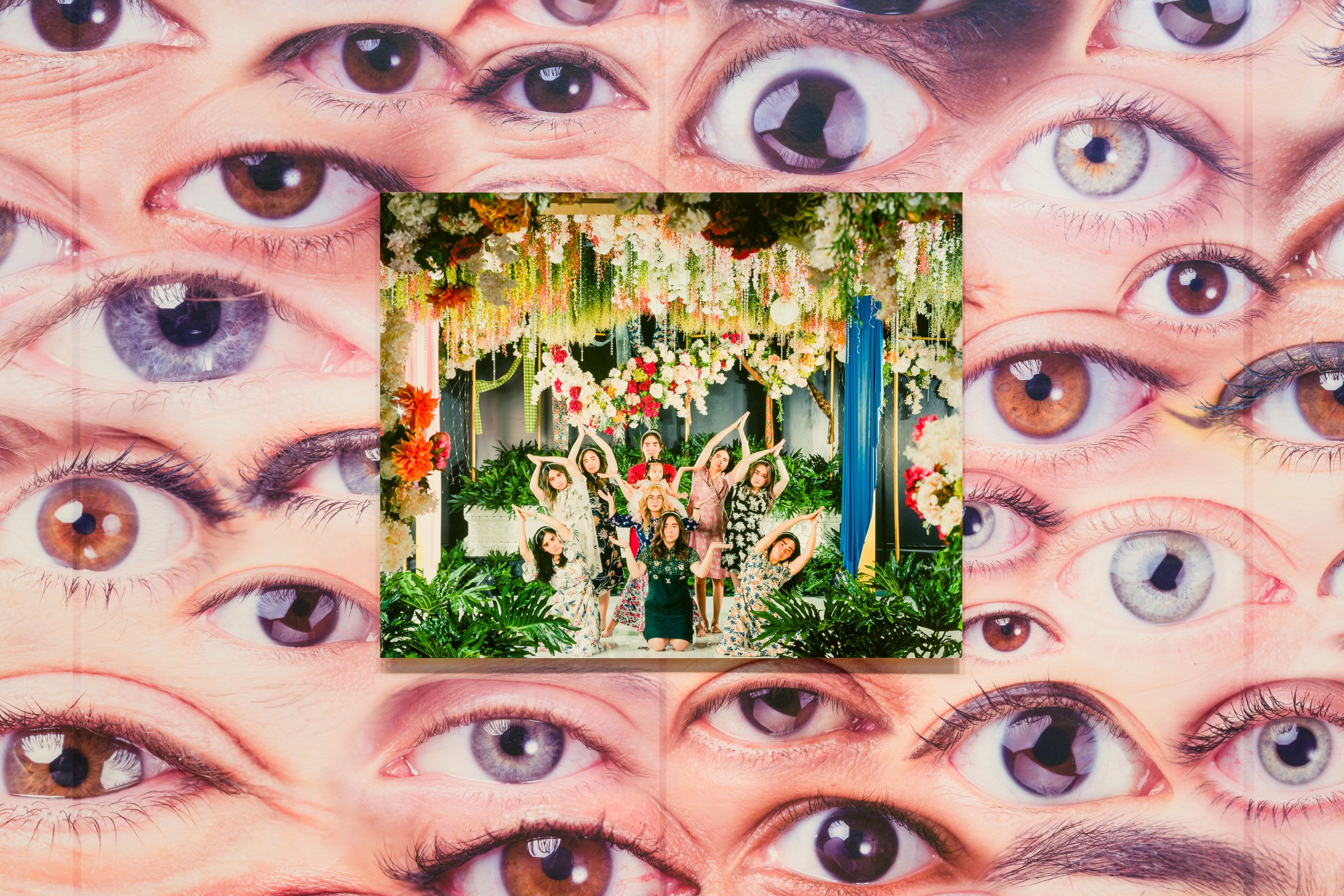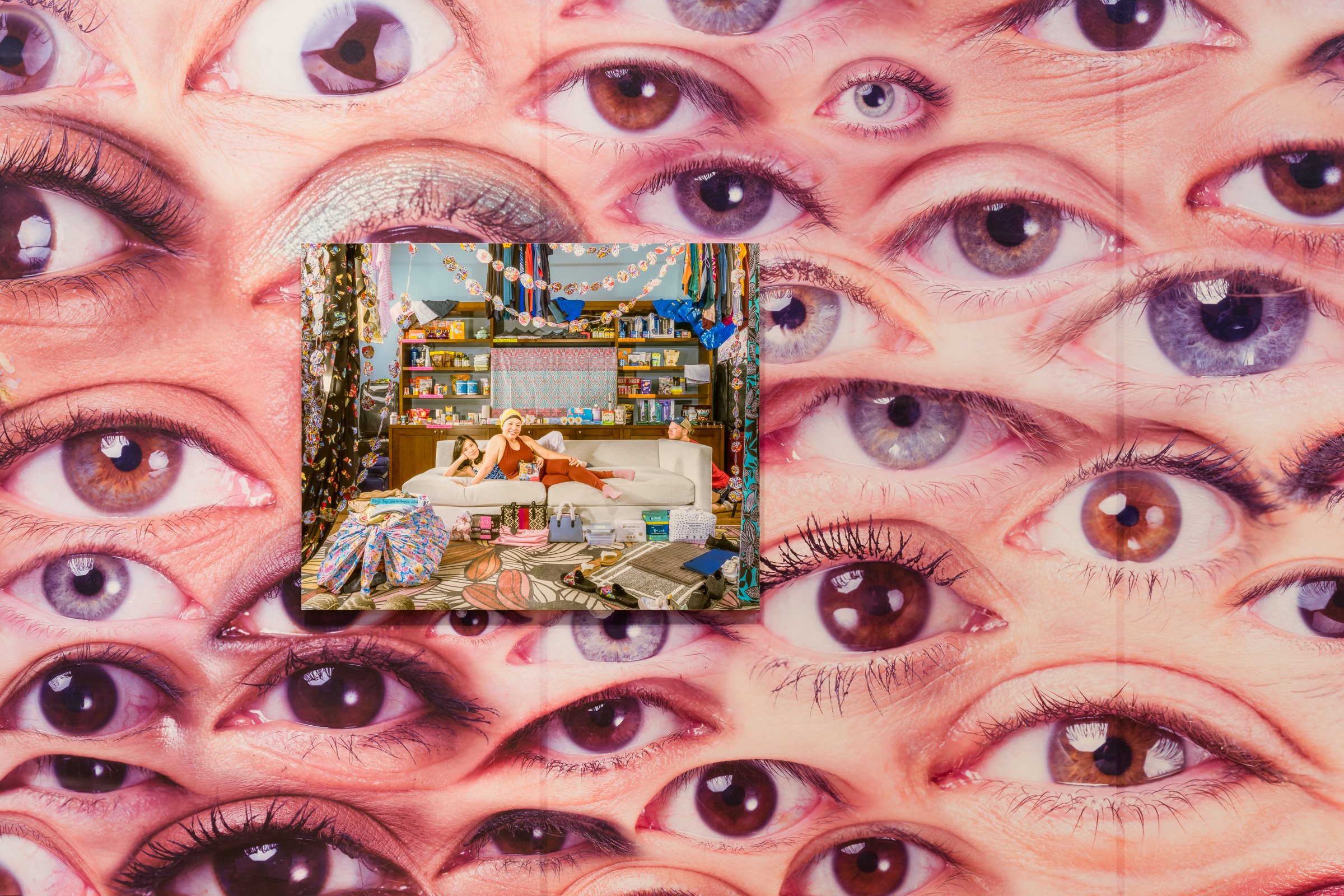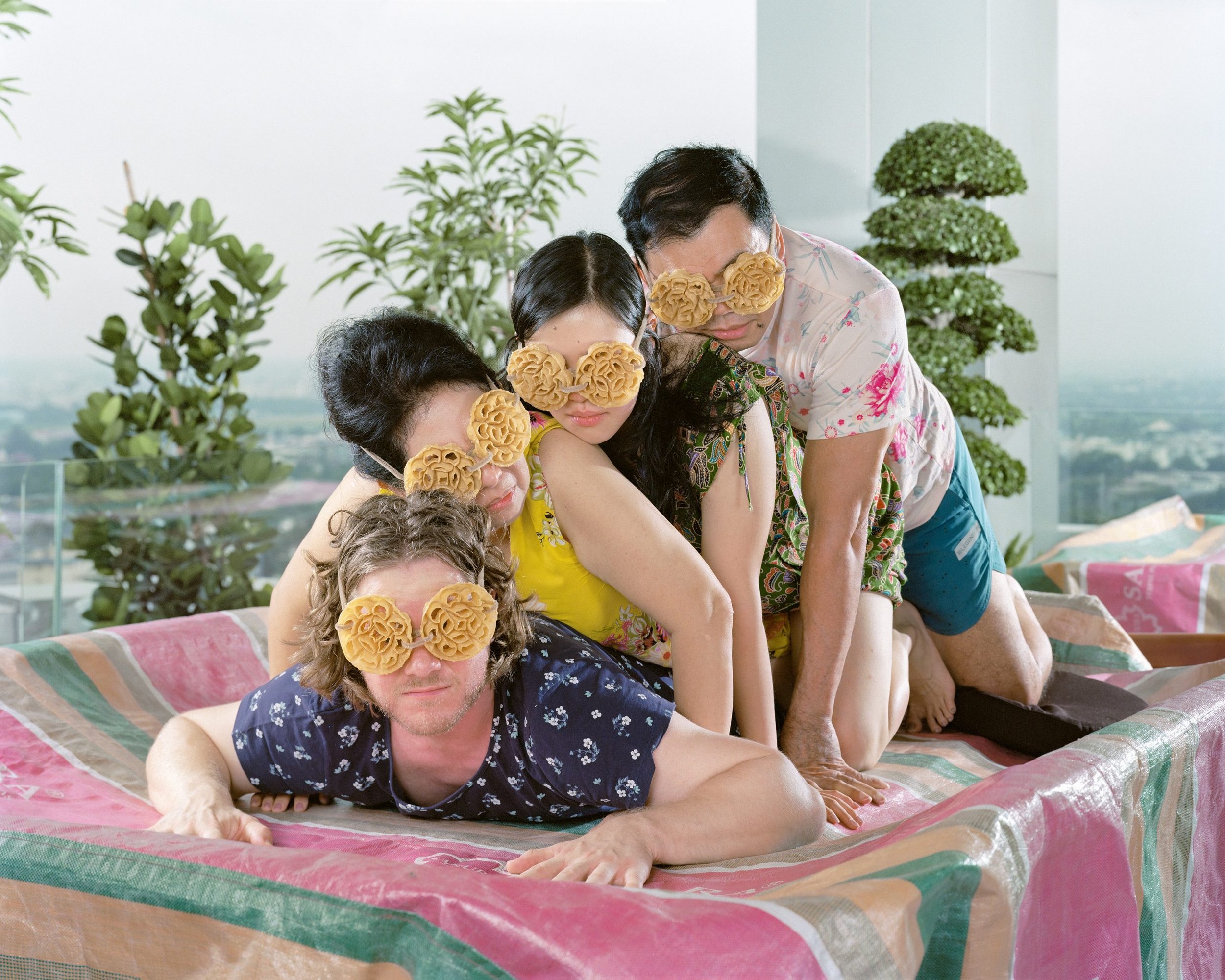Leonard Suryajaya: "Parting Gift for Quarantine Blues," 2024. Photo by: Blaine Campbell.
Leonard Suryajaya uses his work to test the boundaries of intimacy, community and family. He uses photography, video, performance and installation to show how the everyday is layered with histories, meanings and potential.
23:16
You sent
00:00 And dancing. And then suddenly the dark room is just like quiet and intoxicatingly stinky with the emulsions and everything, it just felt like a complete environment. And at that point, I see how well everything that I learned from the theatre. I could apply it in my photography because, since the very beginning, I have been trying to find a language in which I could communicate.
00:34 Where I couldn't trust verbal words to carry me. So, It was always this drive of wanting to communicate in ways that I could fully see myself in. And that's that was my Uh, impetus of going into theater program and then art program. And, You know, a lot of Early struggles that I faced was not understanding fully.
01:13 And what's happening in my life in my world. My identity. I grew up at a. I grew up at a time where Uh, Indonesia didn't recognize the Chinese ethnic group as a full citizen. So, You know, I grew up with stories about persecution, ethnic cleansing survival and It wasn't until the year 2000 when Chinese minorities were considered full citizens.
01:47 And at that age I was already like up. My trust issues are not going to trust that this is gonna be okay. So that's early on. I've set up my mind that I wanted to leave And I think the discovery of my queerness also fueled my desire to find a place, a new language, a new community in which I could feel.
02:14 Supported and safe.
Well it's interesting you talk about final language because there is such a singular and unique visual language apparent in your photographs. So I thought this would be a great place to talk a little bit about your approach to staging and taking photos, you know, your boldness, your visual abundance.
02:38 Your approach to shooting in a particular location and also your technical process because….
So, I make my photographs with a large format film camera. So the camera always stays on the tripod in one location. It’s not as easy to manoeuvrer left or right or expect. Uh, candid expression.
03:10 So that process makes me feel like my photographic frame. As a stage. So, I set the camera down, I figured out where the camera is facing. I start building and changing up the This up, bring things in, leave things out and then I set up all of the lights and then I invite people into the set and then together we figure out what gestures we're making.
03:46 That's kind of how I usually start making my work. And, You know, I realize I'm in, in my personal life. I, it took me. A long time to understand fully what? Preference is in terms of like, Tininess clutters and everything. I, I realized this when I Went through the pandemic.
04:21 I just started feeling like I'm just, I'm just surrounded with shit. I have shit from 10 years ago that I don't ever use anymore. I have shit five years ago that I never even care to deal with anymore. But what? Got me so attached to a point where I couldn't deal with any of them and I realized, oh, this is actually the way that my mom taught me how to manage our belongings.
04:56 This is how the culture that I grew up with taught me how to keep things. I think realizing that it gave me a sense of power and Liberty but also thanks to Marine condo I I got to make my peace with all of these items I'd say thank you and then be able to like fully part with.
05:25 Because in the beginning, you know it's not like I love clutter and the maximalist approach is just what my parents’ house looked like I just make things tidier in my early photographs. So as I progress and as I feel like What is the? Differentiation between my personal preference and my artistic preference.
05:49 I start to realize Oh, I had always been very good in. Arranging things and finding a sense of order with chaos. And usually, it's like my parents, uh, Chaos or my traumas or the anxieties that I have, I've been very good at wanting to figure out why something Are the ways that they are where things come from.
06:22 So That drive in wanting to arrange things is actually what I feel empowered and I can say that that's part of my visual language. Now, So, I feel like in my personal life, I try to make things as simple as possible. So that new ideas can come in and out and I get to make a very condemned, um, documentation or remembrance of a topic or a time, an idea that I want to create, but then I don't have to live with.
07:07 Clutters. Those are like visual exercises of them, almost? Yeah, that's a great way to Know encapsulate. The process. So then when you enter someone's space to, you know, In this process of creating a stage, do you prep people at all? Or do you go in the cold and sort of collect in place and arrange stuff?
07:32 In the moment spontaneously. Yeah, I feel like my process is very organic. I feel like I know everyone. That I make the photos with and a lot of the time. It's their hospitality and their trust in me. Uh, for example. Um, we're gonna go see it in person, but want a photo called Rabbit Hole is a photograph of someone who I didn't know much beforehand.
08:05 Uh if I can go into details how I got to make that photo. So, two years ago, I was a part of an Exhibition at Art Institute in Chicago, by the Floating Museum. The exhibition connected. Local Chicago artists with key figures in the Chicago art scene. As well as connecting both of us with specific collections from.
08:40 Art Institute to make a photograph of And I got paired up with Stephanie Harris who sits on the women's board at the Museum. And I got, I got connected with her to make a photograph at her home. Making sure the photograph from the collection is part of the And, I mean, I didn't know her and I was unsure how to approach it, but she was already like, so open.
09:19 Which was kind of like overwhelming because she was like, come to my house, walk through every room. See what you like, open up my closet and see what you want to pull and we can start with that. So, I did I explored her house And I came across this room filled with like holiday tchotchkes.
09:47 Huge rabbit. A bunch of turkeys, a bunch of like eggs and then Christmas stuff. It's like, wow, you're you love your holiday and then I also came across all of her framed Children's paintings. In her home. So, the inspiration of just bringing these together, just came naturally to me.
10:15 So what I did was I told all of her holiday tuskies and then I made a new pattern using her kids paintings to be used as Tablecloth and decoration in the photograph. And then I just arranged everything in her dining room and it wasn't until The end of the first day.
10:42 Of setting things up. She came to me and was like, well I look at your previous work, you always put things on people's faces. I want things on my face. And I was just like, whoa, this woman on the board of the Art Institute. Wanted me to put things on her face.
10:58 What do I put on her face on her face? And, And then I just started asking her more questions about, okay? What did you eat? What what's your favorite food? What's your favorite snacks? And then she was like, oh I I eat a lot of nuts and carrots. I was like, I'm not gonna put nuts on your face and put it in a photograph to be placed in the museum.
11:21 So I came up with the idea of putting shaved carrots on her face and it all kind of came together because of The huge rabbit that she has and then it was like, okay, great. So this woman, Is surrounded by all of her holidays tootskies and her Children's painting, and it's almost like, The rabbit was about to attack her, it really felt like I don't know, I feel like that's kind of how my process is sometimes.
12:01 I literally came in with just the best curiosities and openness and then in the end, it all kind of came together and the work I make with my family. I feel like a lot of it comes from our. Uh, jokes. Our Curiosities about them, for example, when my mom and sister came to Chicago, to visit me, oh my gosh, the shopping that they made that that Brought to my home was so overwhelming to a point where I was like, well, Let me just help you.
12:39 Arrange all of your shopping so you can see all of them so you won't buy extras. So I arrange all their shoppings and then I just photograph them in front of it and that became one of the photograph you. So, a lot of the time, it's pretty organic in terms of Where ideas come from.
12:59 And that I just use, You know, my curiosity to guide me into figuring out what kind of photograph. It becomes. I don't know about the story. What's done is that the implication is? As part of making word and I feel like you see that as well in the photographs of your family.
13:32 And the people is that like those photos capture such a breath of emotional registers, like faced to the death of love and tenderness. But also that the egg is that can be contained. Within those relationships that sort of often is left unsaid. Could you talk a little bit about how those relationships, inform your photographs and employ your practice?
13:57 Yeah, I feel like the earliest goal that back had with making art is to fully communicate myself. When I? Going through my discovery of my queerness. You know, in Indonesia. Even until now, I could be put in jail for being queer for being an openly. Um, you know, open So early on when I was in my undergrad.
14:39 I, I was basically stuck with the question. I share my whole self with my family or I give them. The discounted version of Who I am and also with the history of persecution. I always question like hey why didn't you ever fight back? Why didn't you ever speak up why did you ever Fight.
15:11 But, you know, Chinese, Indonesian Is only like three percent of the population today. At, at that time, it was only one percent So, You know, early on with in my career I always question like okay, if if this is the politeness that you expect of me and also this is the culture and values that you're trying to instill in me.
15:41 I don't necessarily I never felt like this is way worse for me. And I think that's why I was so ambitious in trying to find my own language in, which I can acknowledge those complications and also speak up Without necessarily. Break up with them and nowadays. I kind of call it like reticle.
16:11 Uh, modesty. Where I still can't acknowledge the Fucked upness of all of this, but I am modest enough to realize that I am under all of these. Values and power, but that will not ever stifle Freedoms who want to be able to speak up and I feel like that that is Center Western concept to bring to my Asian family to understand and I feel like that's why I choose to stay in America and juggle both.
16:56 With a sense of responsibility. And and I I realize the way that I've been making work is truly a way in which I could understand. Uh, the traumas or the fear, or the adversity that I experienced of being in the closet, you know, at the time I was so afraid that they were gonna Exiled me that they were not going to upset me.
17:28 So early on when I was making photographs of my family, I always Feared that, that photo was gonna be the last Of my family, the last time that I got to make with them. That's why I need to tack it in with everything, you know, from home. The things that they eat, the things that I grew up with our tablecloth or a curtain bed, sheets, I use it all to.
18:00 To make my photograph full, so that If I ever, Got exiled. I still have that document to remind me of where I come from. I want that kind of made him. Emotional. But to me, making art was my first way of acknowledging. My emotions being able to like, Be on this.
18:24 Hey I'm actually afraid. Hey, I'm actually annoyed. Hey, I'm actually angry because It seemed like we were always taught to be. Polite than to be okay with all of these challenges. And you know, I even carried it in my name. Uh, my name is Leonard Suryajaya. Uh, because my parents, they were born with Chinese names and they had to change their names into Indonesian names or Western some names.
19:01 So, when I was born, they knew better not to name me anything that could cost me. Heartbreaks. And when my dad changed his name, he didn't have a last name so He just assigned me Suryajaya, as, as my last name because I was born at noon. Means when this time, Us shines victoriously, so that was like my early gift of creativity from my parents, I guess.
19:35 So yeah, I do see the way that I make work is the way that I get. Acknowledge the full spectrum that my thoughts emotions and identity.
19:56 So yeah, I like to want to join us in the mesophia last year. Yeah. Um, I guess when we were trying to figure out what this ship was,
20:16 I think I proposed the use of these wallpapers to help support the photographs of my family. So there are three different, uh, wallpapers that I use for this exhibition.
So this wallpaper comprises About 80 something. Eyeballs. Of my Colleagues friends families. So each one of them came to my studio and I got to make portraits of them that they could use for your social media headshots or anything.
*Field Notes Captured at Artist Talk -Esker Foundation
